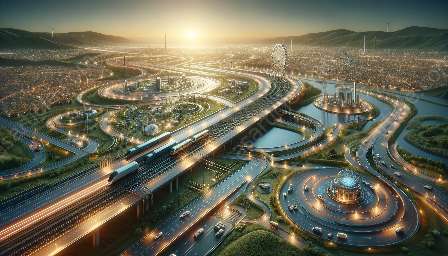Coastal engineering, sea level rise, port & harbor engineering, and transport engineering are interrelated fields that play critical roles in optimizing coastal infrastructure and addressing the challenges posed by rising sea levels. In this comprehensive topic cluster, we will delve into the principles of coastal engineering, the impacts of sea level rise, and their applications in port & harbor engineering and transport engineering.
The Basics of Coastal Engineering
Coastal engineering involves the study and application of principles to protect and manage coastal areas. It encompasses the design and construction of structures and systems to mitigate coastal hazards, such as erosion, flooding, and storm surges. Coastal engineers employ a multidisciplinary approach to develop sustainable solutions that balance environmental conservation with the needs of coastal communities and industries.
Understanding Sea Level Rise
Sea level rise is a consequence of global climate change and the thermal expansion of seawater, as well as the melting of glaciers and ice caps. It poses significant challenges to coastal regions worldwide, affecting infrastructure, ecosystems, and human populations. By understanding the drivers and impacts of sea level rise, coastal engineers and researchers can develop adaptive strategies to minimize its consequences.
Coastal Engineering in the Context of Sea Level Rise
The synergy between coastal engineering and sea level rise is evident in the development of resilient and adaptive coastal infrastructure. This includes the design and implementation of coastal protection measures, such as seawalls, breakwaters, and beach nourishment projects. Additionally, coastal engineers collaborate with stakeholders to integrate nature-based solutions and sustainable practices to manage the impacts of sea level rise on coastal systems.
Port & Harbor Engineering: Navigating Coastal Challenges
Port & harbor engineering focuses on the planning, design, and maintenance of port facilities, including piers, jetties, and navigation channels. As sea level rise affects the operational and safety aspects of ports and harbors, the integration of coastal engineering principles becomes crucial. This includes assessing the vulnerability of port infrastructure to sea level rise and implementing adaptive measures to ensure the resilience and functionality of maritime transport hubs.
Transport Engineering: Adapting to Changing Coastal Conditions
Transport engineering encompasses the efficient and safe movement of goods and people, often in coastal environments. With sea level rise influencing coastal transportation infrastructure, transport engineers collaborate with coastal and port engineers to incorporate adaptive design elements. This involves assessing the impact of sea level rise on coastal roads, bridges, and rail systems, and implementing innovative solutions to maintain transport connectivity in the face of rising sea levels.
The Future of Coastal Infrastructure
In an era of accelerating sea level rise, the integration of coastal engineering principles into port & harbor engineering and transport engineering is essential for building resilient and sustainable coastal infrastructure. Embracing innovative technologies, nature-based solutions, and adaptive strategies will be central to addressing the complex challenges posed by sea level rise and ensuring the longevity and functionality of coastal and maritime infrastructure.

